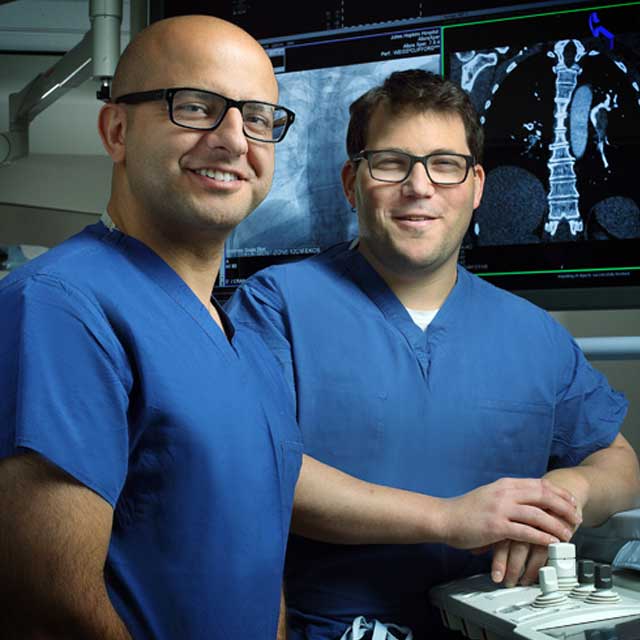By the time many patients find their way to Johns Hopkins pulmonologist Keira Cohen, they have seen doctor after doctor to treat their lung ailment, but they only seem to get sicker. “Many of our patients have been misdiagnosed and mismanaged,” she says. “They have bounced from specialist to specialist and have almost gotten whiplash from the different messages and treatments they have received.”
The outlook for these patients has improved dramatically with the launch of a multidisciplinary center at Johns Hopkins — co-created by Cohen, fellow pulmonologist Mark Jennings and infectious diseases specialist Jonathan Zenilman — that is specifically aimed at managing and studying two lung conditions that doctors are seeing with more frequency: bronchiectasis and nontuberculous mycobacterial infections.
Nontuberculous mycobacteria (NTM) are a category of organisms occurring in the environment, such as in water and soil. In most people, these bacteria do not cause health problems, but in some cases these bacteria can infect the airways and lung tissue or organs outside the lungs. It can take years and multiple antibiotics to clear the infection. While related to tuberculosis, these infections are not thought to pass from person to person.
“We hear a lot about TB, but we have more than 10 times as many cases of NTM disease than TB cases in the United States these days,” says Cohen.
Bronchiectasis, a scarring of the airways, can develop from multiple causes. If not managed well, bronchiectasis can lead to worsening lung function, repeated lung infections and increased hospitalizations. While patients with bronchiectasis are at risk for all sorts of infections, one that occurs frequently is NTM, which is why the new center focuses on both conditions.
Crucially, says Cohen, “when patients come to our multidisciplinary center, it’s a one-stop affair.” At the Friday morning clinic in Johns Hopkins Bayview Medical Center’s Asthma and Allergy Center, they’ll see a pulmonologist, an infectious disease specialist and a physical therapist knowledgeable about airway clearance techniques. The center’s nurse practitioner, Meghan Ramsay, sees patients in clinic, acts as a bridge between these different specialists and communicates with patients between visits. The center also works with a chest radiologist and has relationships with specialists in rheumatology, allergy and immunology, gastroenterology, and otolaryngology. The in-house Clinical Mycobacteriology Laboratory at Johns Hopkins allows physicians to quickly and accurately assess test results.
“As a multidisciplinary team, we meet to come up with a unified treatment plan that is individualized according to the needs of each patient,” says Cohen, who notes that the center has been designated a Johns Hopkins Precision Medicine Center of Excellence.
Research is a crucial element of the multidisciplinary center. Patients who come to the clinic have the option to donate biospecimens (blood and mucus) to the team’s biobank and to have data from their medical chart added to an ever-growing database. One goal, she says: “to see if we can determine blood-based predictors of who might respond better to a particular medication or treatment plan.”

